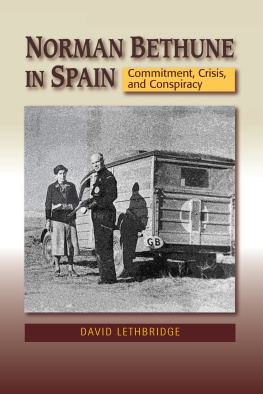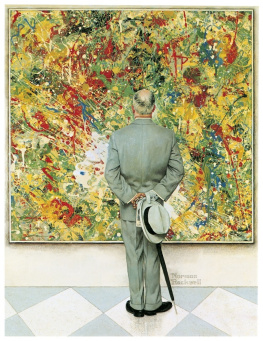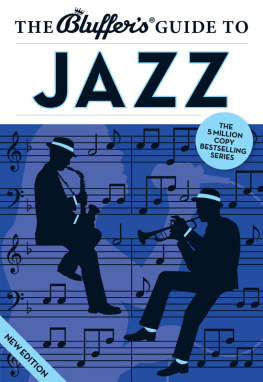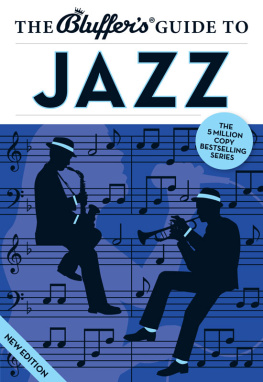Norman David - Jazz Arranging
Here you can read online Norman David - Jazz Arranging full text of the book (entire story) in english for free. Download pdf and epub, get meaning, cover and reviews about this ebook. year: 1998, publisher: Scarecrow Press, genre: Children. Description of the work, (preface) as well as reviews are available. Best literature library LitArk.com created for fans of good reading and offers a wide selection of genres:
Romance novel
Science fiction
Adventure
Detective
Science
History
Home and family
Prose
Art
Politics
Computer
Non-fiction
Religion
Business
Children
Humor
Choose a favorite category and find really read worthwhile books. Enjoy immersion in the world of imagination, feel the emotions of the characters or learn something new for yourself, make an fascinating discovery.

- Book:Jazz Arranging
- Author:
- Publisher:Scarecrow Press
- Genre:
- Year:1998
- Rating:5 / 5
- Favourites:Add to favourites
- Your mark:
- 100
- 1
- 2
- 3
- 4
- 5
Jazz Arranging: summary, description and annotation
We offer to read an annotation, description, summary or preface (depends on what the author of the book "Jazz Arranging" wrote himself). If you haven't found the necessary information about the book — write in the comments, we will try to find it.
Jazz Arranging — read online for free the complete book (whole text) full work
Below is the text of the book, divided by pages. System saving the place of the last page read, allows you to conveniently read the book "Jazz Arranging" online for free, without having to search again every time where you left off. Put a bookmark, and you can go to the page where you finished reading at any time.
Font size:
Interval:
Bookmark:
ARRANGING
ARRANGING
URSINUS COLLEGE

SCARECROW PRESS, INC.
Published in the United States of America
by Scarecrow Press, Inc.
A wholly owned subsidiary of
The Rowman & Littlefield Publishing Group, Inc.
4501 Forbes Boulevard, Suite 200, Lanham, Maryland 20706
www.scarecrowpress.com
Estover Road
Plymouth PL6 7PY
United Kingdom
Copyright 1998, by Ardsley House, Publishers, Inc.
All rights reserved.
Reproduction or translation of any part of this work beyond that permitted by Sections 107 and 108 of the 1976 United States Copyright Act without the permission of the copyright owner is unlawful. Requests for permission or further information should be addressed to the Permissions Department, Ardsley House.
ISBN: 978-1-880157-60-2
Printed in the United States of America
With great love,
to my father and mother


People grow up acquiring different musical aptitudes and tastes. A persons particular experiences with music styles as well as societal influences will determine significantly how he or she listens to and relates to music. Consequently, gaining technical ability in any area of music will not necessarily guarantee hip artistic expression. One does not just feel swing or have soul without regularly experiencing creative music by either listening to it, playing it, or both. This is why a person who has previously embraced jazz and other sophisticated styles of music will often be tuned in instinctively to many of the facets of progressive harmony and arranging prior to studying these subjects formally. Regardless of musical background it is also essential, while advancing in practical skill and intellectual knowledge, to continue maturing in ones feeling for and appreciation of creative music.
This text presents an examination of arranging methods and their applications. I have made every effort to explain the information clearly in a logical order, and to compose musical examples that adequately illustrate the material. The text begins with a historical overview of jazz band instruments and a study of their physical and tonal characteristics. This is followed by discussions of relevant terminology, notational devices, and principles of theory. The remainder of the text contains studies of arranging technique for the rhythm section, combinations with up to five horns, larger ensembles, and big band. Each chapter concludes with a series of exercises. The text is designed for use in a jazz studies program and as a professional reference manual for musicians in general.
I want to express my sincere appreciation to Karyn Bianco for answering many questions and assisting throughout the publishing process and to Laura Jones for her expertise and guidance in the technical aspects of putting the book together.
My original manuscript proposal was reviewed by Ted Pease and Ken Pullig, Berklee College of Music; Tom Boras, New York University; as well as Paris Rutherford, University of North Texas. I appreciate the dedication of these colleagues, and am grateful for their positive reviews and perceptive suggestions for improving the material.
Through the years, I have studied and worked with hundreds of instrumentalists, composers, arrangers, and music educators. I have heard my compositions and arrangements performed live or recorded by world-class players. The inspiration of these gifted people was an invaluable factor in the formulation of this text. Deserving of special mention are the following top-rank musicians and true friends who have consistently encouraged me and have expressed confidence in my efforts: Ben Schachter of Temple University and Bucks County Community College, my great friend and musical ally, who graciously proofread some of the manuscript; Ken Pullig, Chairman of the Jazz Composition Department at Berklee College of Music; Dr. John French, Chairman of the Department of Music at Ursinus College; and Dr. Wayne Schneider, Department of Music, University of Vermont.

Arranging is the practice of designing musical works; it follows composition chronologically. Composer and arranger are often the same person.
An arrangement can be described as ensemble music that is planned and diagrammed in advance of performance. Arrangers must be well-rounded musicians with adequate knowledge of composition, theory, and instrumentation. Their craft is fueled by inspiration and soul powerit involves a sense of daring, spontaneity, and a considerable amount of self-confidence. Here are examples of some of the many questions arrangers must answer in preparing to work:
What instrumentation will be used?
How many choruses will there be?
How will the melody be modified, if at all?
Which instrument(s) will be assigned the melody?
Will there be any reharmonization?
Which instrument(s), if any, will solo?
Should an introduction be added?
These important questions address only a few of the many cosmetic features that pertain to an arrangement. Furthermore, decisions must be made on technical proceduresvoicings, range, backgrounds, section writing, etc.
at the back.)
Jazz-arranging technique is applicable to all genres of contemporary bands. Consequently, in addition to being knowledgeable about important jazz practice and tendencies, arrangers should also be familiar with other common contemporary music styles. Following are some possible settings:
A horn section of trumpet, alto saxophone, and trombone could front a jazz combo or back up a rock group.
Popular recordings often include a saxophone or trumpet solo in the arrangement.
Jazz, country, Latin, and gospel bands all have rhythm sections.
Successful arrangers are also researchers who, when necessary, investigate and listen to music styles unfamiliar to them in order to complete projects in a professional and satisfying manner. Although it does not create a musical style, arranging molds the music within a style.
While studying arranging technique, it is necessary to write many examples and experiment with different aspects of the technique. It is also essential to have the material performed as often as possible. The strongest insights will result from hearing how different instrumental combinations sound performing arranged passages. Consider these representative questions:
Should the melody be played by trombone or soprano saxophone? Why?
Do electric guitar and baritone saxophone sound well in unison, in octaves, or in neither?
Where in its range does the trumpet begin to overpower the other instruments, and does this change from one situation to another?
How do various combinations of instruments sound when voicing chords?
Practical experiences in writing arrangements will provide a functional perspective and answers to the many questions that come up. As in other creative pursuits, a high skill level is a product of continued effort and preparation. Patience, professional habits, and a love of the craft of arranging are essential. Quality workmanship will increase the possibilities for performances.
Font size:
Interval:
Bookmark:
Similar books «Jazz Arranging»
Look at similar books to Jazz Arranging. We have selected literature similar in name and meaning in the hope of providing readers with more options to find new, interesting, not yet read works.
Discussion, reviews of the book Jazz Arranging and just readers' own opinions. Leave your comments, write what you think about the work, its meaning or the main characters. Specify what exactly you liked and what you didn't like, and why you think so.






